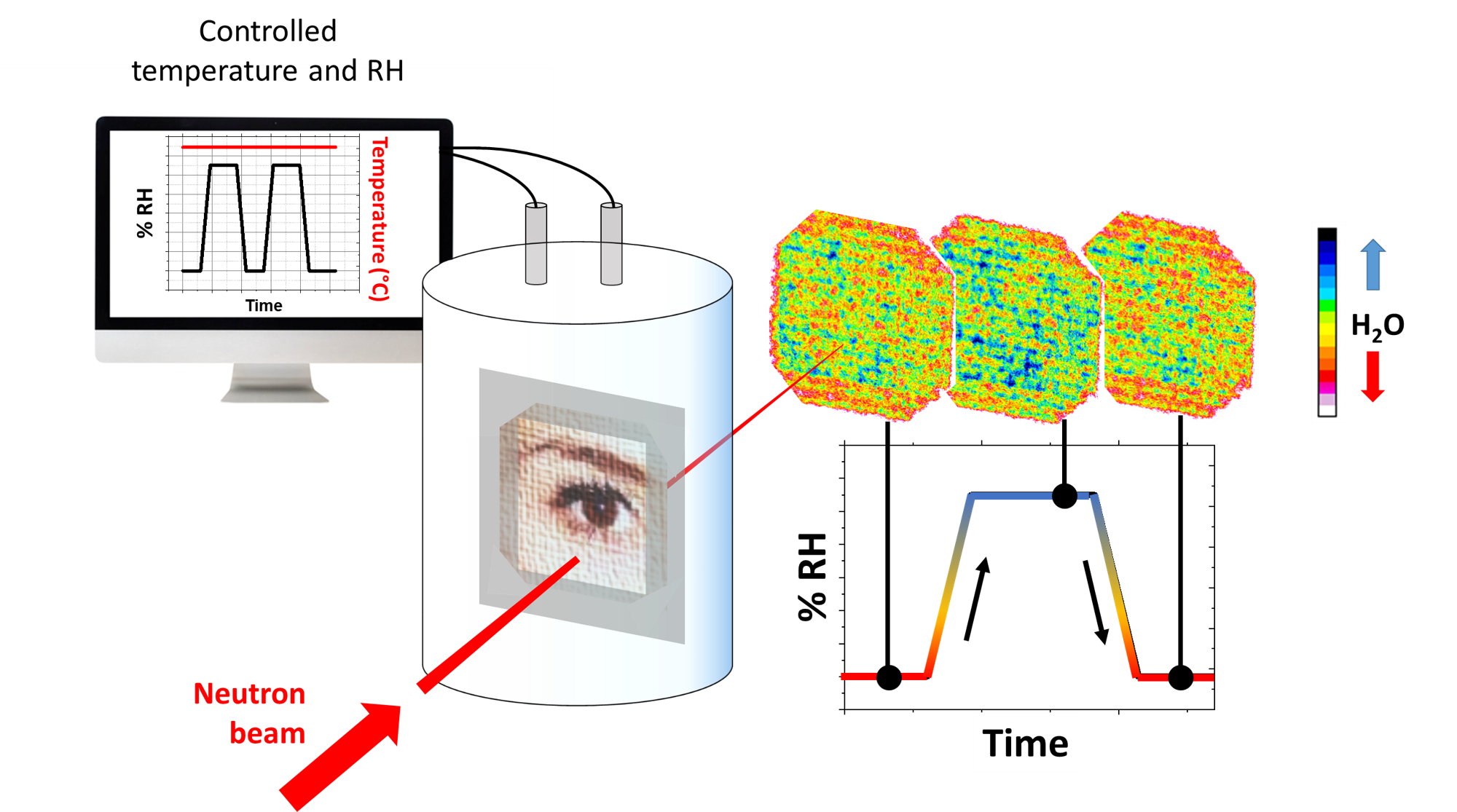When canvas-supported paintings are stored in historic houses and palaces, it is difficult to control the environmental conditions and prevent fluctuations in relative humidity and temperature. These fluctuations can cause changes to the canvas that result in damage to the painting.
Ideally, there would be a way to treat the canvas to reduce these changes without causing any damage to the painting itself. This type of treatment could also have applications in parachutes or hiking gear manufacturing where a more accurate estimation of moisture diffusion would lead to the improvement of fabrics structure and quality.
Researchers from UCL and Birkbeck University wondered if they could use the unique ability of neutrons to monitor moisture uptake/loss, and map its distribution, in small canvas samples to develop such treatments. They contacted IMAT beamline scientist Genoveva Burca if she thought neutron imaging during controlled cycles of moisture sorption and desorption could help them.
Genoveva initially ran an Xpress measurement on IMAT test the experiment feasibility, and then the scientists submitted a full proposal for beamtime as part of Alexandra Bridarolli's PhD project at UCL, jointly supervised by Birkbeck, University of London. The neutron imaging results were complemented by programmed relative humidity (RH) dielectric analysis performed at Birkbeck on similar samples.
The experiment was one of the most challenging experiments ran on IMAT to date. A custom-made humidity chamber and humidity controller was specially designed for neutron imaging measurements by Lacerta Technology Ltd. In addition to the equipment provided by Lacerta, it required extra pieces of equipment, and help from ISIS technicians.
The humidity controller enabled a fully programmable RH profile to be designed for each experiment. The temperature was set by a recirculating water bath, kindly supplied by Andy Church from the ISIS Soft Matter team.
The small chamber was designed to hold a piece of canvas and control the relative humidity. However, being able to monitor the relative humidity and take neutron radiographs at specific points required synchronisation with the ISIS controls and detector systems.
At this point, Freddie Akeroyd from the ISIS Software Development Group got involved, and wrote a code that enabled the RH reading to be recorded together with the beam image information. This greatly simplified the corelation of RH values with beam images. This code also enabled the control of relative humidity during the experiment and allowed the experiment to be paused if the beam was off. Moreover, it can be used for future research on IMAT.
With all this preparation, when the four days of beamtime came round, the setup all went smoothly. Genoveva explains; “It only took eight hours – fortunately it all happened before COVID restrictions were put in place and so the whole team was able to be there to help."

Schematic of the experimental setup, ACS Appl. Polym. Mater. 2021, 3, 2, 777–788
The samples measured on the IMAT included canvases with and without different reinforcement treatments. Using the newly designed sample cell and aligned software, the researchers were able to take a series of images that showed the real-time moisture diffusion dynamic of the canvas over time and with programmed increase in RH. This experiment enabled them to evaluate the performance of the treated canvases and to determine which one was optimum in minimalizing the effect of moisture uptake.
The experiment principal investigator, Dr Marianne Odlyha from Birbeck, University of London, remarks; “We are grateful for this opportunity. This work makes a significant contribution to the advancement of the new research on preservation of painting canvases."
Dr Alexandra Bridarolli, now a postdoctoral fellow at the Getty Conservation Institute, USA, explains; “We feel extremely lucky for having been able to use neutron radiography for this research. The spatial and temporal resolution offered by the technique helped us expand our understanding of the impact newly developed consolidants can have on the hygroscopic response of treated painting canvases. With the setup-up now in place, new opportunities are now available for the advanced understanding of hygroscopic processes and dynamics in heritage materials and objects."
Further information
The full paper can be found at: https://pubs.acs.org/doi/10.1021/acsapm.0c01073
